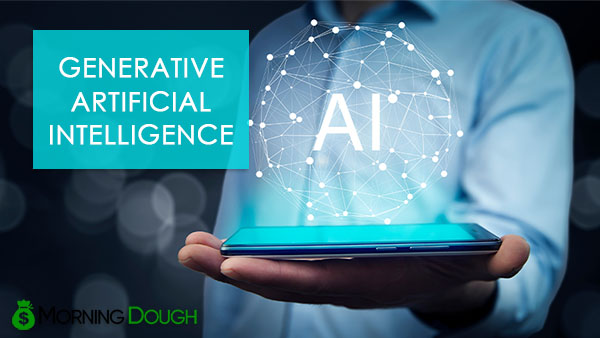Generative Artificial Intelligence
What is Generative Artificial Intelligence?
Generative Artificial Intelligence refers to a subset of AI technologies that can generate new content, ranging from text and images to music and code, based on learning from a dataset. Unlike discriminative models that classify input data into categories, generative models can create new instances of data that resemble the original dataset. This is achieved through complex algorithms that capture the underlying distribution of the data they are trained on. Generative AI operates on the principle of understanding and replicating the patterns, structures, and features of the input data, allowing it to produce novel outputs that maintain a semblance of authenticity and coherence. These models have been a significant breakthrough in AI, as they shift the role of machines from passive analyzers of data to active creators, capable of innovation and design.
The development of generative AI has been propelled by advancements in neural networks, particularly deep learning techniques such as Generative Adversarial Networks (GANs) and Variational Autoencoders (VAEs). These technologies have enabled machines to achieve a level of creativity that was previously thought to be unique to humans. The implications of generative AI are vast and multifaceted, affecting industries from entertainment to software development. As these models become more sophisticated, they raise important questions about the nature of creativity, the value of machine-generated versus human-generated content, and the ethical considerations of AI-generated material. The potential of generative AI to democratize content creation, personalize user experiences, and accelerate innovation is immense, but it also necessitates careful consideration of its impact on society.
Generative Artificial Intelligence Examples
Deepfakes: Utilizing GANs, deepfake technology can generate highly realistic images and videos by superimposing one person’s face onto another’s body, often used in celebrity videos or for creating synthetic media.
AI Art Generators: Tools like DeepArt and Google’s DeepDream generate artistic images by applying the stylistic features of one image to the content of another, creating new pieces of art.
AI Music Generation: AI systems like OpenAI’s Jukebox can compose music in various styles, producing original songs that mimic the style of existing artists or genres.
Text Generation: OpenAI’s GPT-3 and similar models can write coherent and contextually relevant text, ranging from poetry to news articles, by predicting subsequent words in a sequence.
Drug Discovery: Generative models can propose new molecular structures for potential drugs by learning from vast databases of known chemical compounds and their properties.
Video Games: AI can generate levels, characters, and even entire game worlds, offering personalized and ever-changing gaming experiences.
AI Voice Generators: Synthetic voice technology can create realistic voiceovers and speech that sound like specific individuals, useful in personal assistants and dubbing.
AI Fashion Design: AI can generate new designs for clothing by learning from current fashion trends, helping designers with inspiration and speeding up the design process.
AI Architectural Design: Generative models assist architects by proposing building layouts and structures based on design constraints and historical architectural styles.
Content Personalization: Streaming services use generative AI to create personalized trailers and content snippets tailored to individual user preferences.
AI Code Generation: AI-powered tools can write functional programming code, given a prompt in natural language, aiding developers in software creation.
